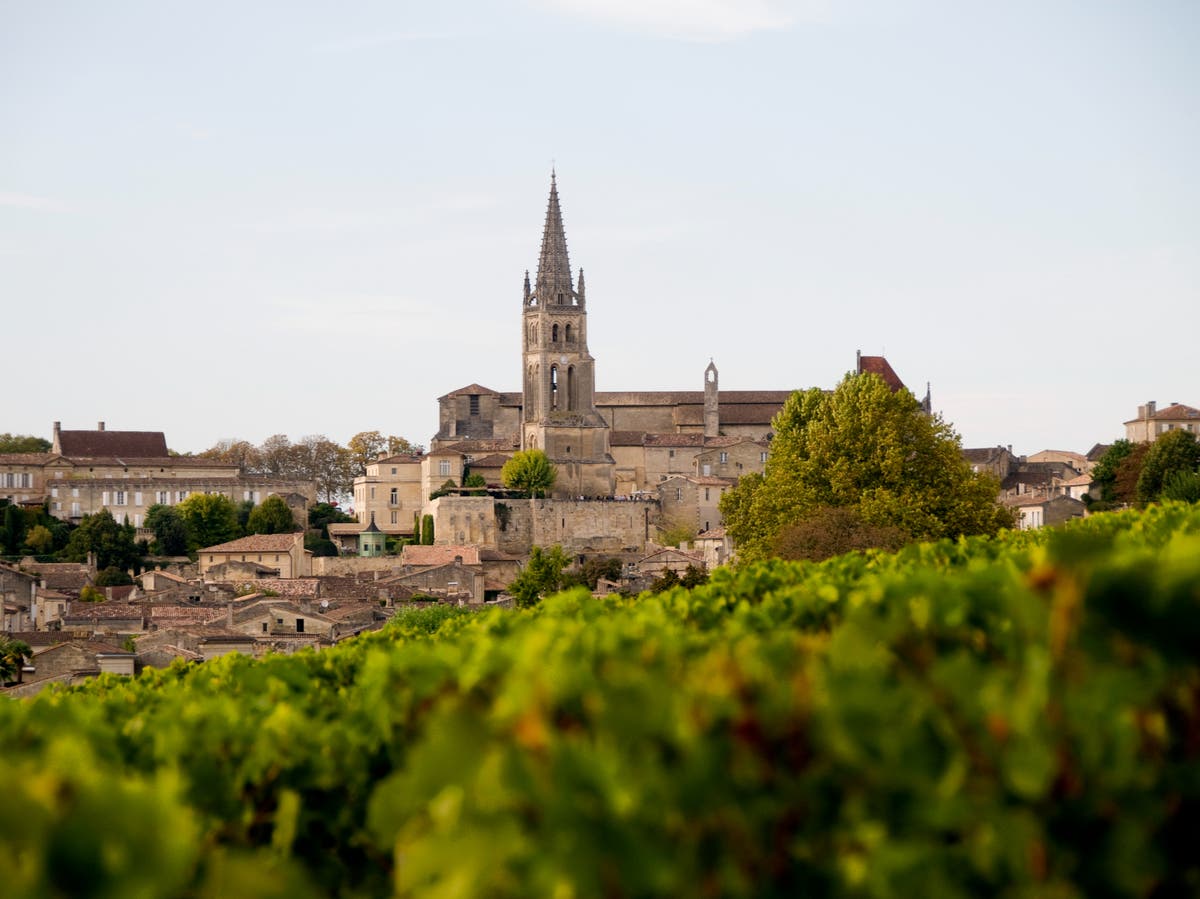The day took a bit of a wobble at Margaux. Not, you understand, because I’d been sampling some of Bordeaux’s top-quality tipples after an excellent lunch accompanied by more wine. It was because Margaux village’s station was deserted out of season, with train information displayed on screens, and no clue which of the two platforms was which. Trains making the 45-minute journey to Bordeaux city seemed to run at different times from both platforms.
I had to chance it; I doubted I’d have time to cross the open tracks once the train arrived. Luckily, I guessed correctly and chugged on with my discovery of Bordeaux by public transport.
Most people don’t realise the extent of France’s wine producing region. It would take you two and a half hours to drive the 99 miles from its northernmost to southernmost extremities. No wonder those taking a vineyard tour generally drive or go on group trips. There is, however, another way – to visit the vineyards by trains, bus and tram. And aside from the slight hiccup I experienced at Margaux, I found it surprisingly easy.
One vineyard, Chateau Les Carmes Haut-Brion, is even within the sprawling city’s limits and can be reached by Bordeaux’s extensive tram network. What’s more, it’s designed by Philippe Starck, resembling the bow of a boat from the outside, while within the concrete wine vats are painted in different designs. (Tour with tasting costs €55).
It’s in complete contrast to the historic Chateau Pape Clement, a 25-minute bus journey away, or a 40-minute bus and train trip from the city centre. Vines were originally planted here in the 13th century by Bertrand de Got, who became Pope Clement V. Now, the grand cru classe wines lie maturing in an enormous barrel-filled room lit by chandeliers.
Read more on taking a wine road trip through Italy’s Piedmont region
You can make your own version in the 19th-century chateau in a process reminiscent of a school chemistry lesson, as you experiment with different ratios of merlot to cab sav. Once I had my winning formula, I bottled it, added a cork and foil and embellished the label: Chateau Jane. (Tour with tasting costs €20, a winemaker course costs €99).
Another day, another vineyard or three, this time in the Medoc with its famous Margaux appellation. The village of Margaux isn’t the most appealing, but you’re there for the vino, and that doesn’t disappoint. I started with the biodynamic wine at Chateau Ferriere, made to beyond-organic principles and according to the cycle of the moon; they also make biodynamic tea. (Tour and tasting costs €25).
It’s just a short walk from here to Marquis de Terme, which has an elegantly modern restaurant where I polished off a superb lunch accompanied by their delicious grand cru classe. The tour here is particularly interesting because they have an eye on the future as well as the past and are constantly innovating.
The expansive cellar not only holds rows of barrels in which to age the wine, but also other containers to achieve different finishes – pearl-shaped barrels, egg-shaped concrete vats, pottery amphora and a large wooden barrel connected by wifi to record changes in temperature, pressure and oxygen. I can confirm that the finished product is particularly delicious; I finished off my tasting with rum made in Martinique from the chateau’s barrels. (Tour and three tastings costs €35).
It was at this point that my little incident at the station nearly jeopardised the 20-minute train ride followed by a 20-minute walk to Chateau Saint-Ahon. Reminiscent of buildings in Paris’s Place de Vosges, this small property is extremely family friendly, with walks through the vines interspersed by informative panels. Its wines are a decent price, with the eponymous brand coming in at €14, which you can drink accompanied by a picnic of produce bought in the shop. (Tour and tasting costs €12). Better still, because it’s in Bordeaux metropolis, once back at the station, you can take a tram back to the sprawling city.
Where you stay here depends on whether you want to be near the station in the south (where I picked) or a tram ride from it near the beautiful Place de la Bourse in the centre, with its many restaurants.
Read more on how to do a sustainable wine tour of Chile
Wherever you choose, you shouldn’t go to Bordeaux without seeing the medieval hilltop village of Saint-Emilion, and enjoying some of its vintages. Happily, it’s just a 34-minute train journey away, followed by a 20-minute walk along a vine-fringed road (or an hour-long bus ride without the walk in season). The eponymous eighth-century saint lived in a cave here, which you can still visit along with the catacombs and spectacular monolithic church; Emilion’s presence drew religious communities who were adept at wine making.
They included the monks at the Couvent des Jacobins, whose atmospheric cellars are reached through a small wooden Harry-Potter style door beneath the stairs. Private visits give you time to chill out in the pretty gardens, while tastings of their organic wines are accompanied by cheese, chocolate or St-Emilion’s famous macaroons. (Tour and tasting costs €22).
It’s much more touristy up the road at Cloitre de Cordeliers, where you can enjoy a restaurant picnic in the ruins of the cloister and take a mad tuk-tuk tour around the town and through some of the miles of underground tunnels carved out under Saint-Emilion by quarrying. (Tuk-tuk and tasting costs €25.) The ones here are used to store sparkling wine rather than Bordeaux red, but just a five-minute walk away, Chateau Villemaurine uses some of its own network of tunnels to mature its superb grand cru classe. Tours by torchlight head into the silence of the cellars, where bats hang from the ceiling and vine roots work their way through the overhead rock. It would be hard to find a more evocative place to end my trip. (Tour and tasting costs €20).
Travel essentials
How to get there
Bordeaux is just two hours from Paris by train. Returns from London St Pancras cost from £235 (thetrainline.com).
Where to stay
The Golden Tulip is a modern hotel just minutes from the station with B&B doubles from £90.
Rooms available from{{#price}}{{price}}per night{{/price}}{{^price}}Check availability for dates and prices{{/price}}
{{#amenities}}
Hotel Amenities
- {{#amenities.foodDrink.length}}
-
Food & Drink
- {{#amenities.foodDrink}}
- {{.}}
{{/amenities.foodDrink}}
-
Internet
Please check hotel for more information on amenities
- {{#amenities.internet}}
- {{.}}
{{/amenities.internet}}
-
Services
- {{#amenities.services}}
- {{.}}
{{/amenities.services}}
-
Parking
Please check hotel for more information on amenities
- {{#amenities.parking}}
- {{.}}
{{/amenities.parking}}
-
Health & Wellbeing
- {{#amenities.health}}
- {{.}}
{{/amenities.health}}
{{/amenities.foodDrink.length}}{{#amenities.internet.length}}
{{/amenities.internet.length}}{{#amenities.services.length}}
{{/amenities.services.length}}{{#amenities.parking.length}}
{{/amenities.parking.length}}{{#amenities.health.length}}
{{/amenities.health.length}}
{{/amenities}}
More information: Bordeaux-tourism.co.uk, gironde-tourisme.com











